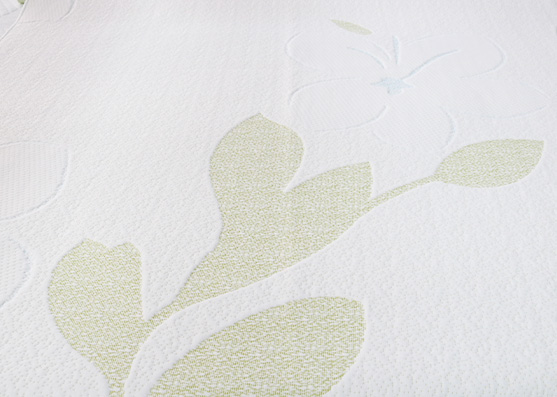Textiles are classified according to processing methods:
1. Knitting: the use of knitting needles to form loops of yarn, and then through the longitudinal string sleeve and horizontal connection to become knitted fabric.
2. Woven: A fabric made of yarns that are arranged perpendicular to each other, that is, the horizontal and vertical systems are interwoven on a loom according to a certain rule. There are denim, brocade, board, linen and so on.
3. Non-woven fabric: There is no warp and weft, it is a fabric that does not need to be spun and weaves. It just arranges the short fibers or filaments in a directional or random fiber arrangement to form a web structure, and then uses mechanical and thermal Reinforced by adhesive or chemical methods. It is called cloth because of its appearance and certain properties.
Extended information:
According to the organizational structure, raw materials, processing technology, texture, appearance and main purpose of silk fabrics, it is divided into 14 categories.
Ancient silk fabrics were basically named according to the fabric structure, fabric pattern, and fabric color. Modern silk still uses many old names, such as crepe, silk, silk, and some foreign words, such as georgette and taffeta.
According to the organization structure, raw materials, processing technology, texture, appearance and main purpose of silk fabrics, it can be divided into yarn, silk, silk, silk, spinning, silk, crepe, brocade, satin, silk, kudzu, wool, velvet, silk Fourteen categories.
1. Yarn: The whole or part of the yarn is made of warp yarn twisted to form evenly distributed perforation silk fabric, also known as plain yarn.
2. Luo: All or part of the fabric is made of Luo weave silk fabric which is twisted with warp yarns to show pepper holes. There are straight Luo, Heng Luo, Hua Luo, Su Luo points.
3. Satin: a silk fabric with a diagonal weave pattern on the surface of the fabric with a twill weave or a twill weave change, which is light and thin. The surface of the fabric in the early days was a mountain-shaped twill pattern, which was called "Lingy" because it "looks like ice."
4. Silk: a natural silk fabric with a plain weave and a fine, smooth and crisp texture.
5. Spinning: It is a silk fabric with plain weave, no or weak twist in warp and weft, light and soft texture.
Brocade: A colorful yarn-dyed jacquard silk fabric woven with multi-color silk threads using heavy organization. Brocade is a prestigious jacquard silk. There is a saying in ancient times that "weaving and plucking are texts, and the price is as gold". There are Shu brocade, Song brocade and Yun brocade.
